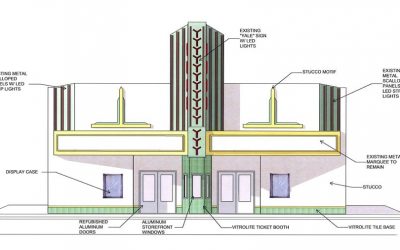A Practical Guide for Architecture Projects
Navigating the complexities of large-scale real estate projects demands a comprehensive understanding of various architectural and engineering (A/E) disciplines. Knowing the roles and contributions of each discipline not only aids in accurate budgeting and effective timeline management but also plays a critical role in risk mitigation. This guide is designed to provide developers, both novice and experienced, with practical insights into how different A/E professionals impact project planning, execution, and success.
How Project Estimates Are Created
Understanding the Basics
Creating a reliable project estimate is a multifaceted process involving several key factors. Initially, detailed site analyses are conducted to understand environmental conditions and regulatory constraints. Preliminary designs are then crafted to outline the project scope and potential challenges. Market conditions, availability of materials, and labor costs are also crucial in shaping the initial budget. Understanding these elements helps in setting a realistic financial framework for the project.
Tailoring A/E Discipline Involvement
Not every project requires the involvement of all A/E disciplines from the outset. The complexity and nature of the project often dictate the required expertise:
- Simple Projects: For smaller or less complex projects, such as minor renovations or small-scale residential buildings, an architect might coordinate the entire project with minimal input from other disciplines. In such cases, the project estimate might be developed with a predominant focus on architectural design and basic engineering needs.
- Complex Projects: For larger, more complex projects like industrial, medical and commercial developments or multi-family residences, a broader range of expertise is necessary. Here, structural, mechanical, and electrical engineers, alongside architects, play pivotal roles in creating a comprehensive project estimate. These professionals ensure that all aspects of the building’s functionality and safety are considered early in the budgeting process.
Role of A/E Disciplines in Estimating Project Costs
Each involved A/E discipline contributes specific insights that enhance the accuracy and reliability of project estimates. For example:
- Architects provide detailed drawings and specifications which form the basis of the project scope and aesthetics.
- Structural engineers offer essential data on materials and construction methods, impacting overall stability and safety considerations.
- Mechanical and electrical engineers assess system requirements, ensuring that the building’s functionality aligns with modern standards for energy efficiency and technological integration.
- Civil engineers may be required if extensive land development or infrastructure integration is involved, influencing both the cost and timeline of the project.
Involving the right disciplines at the right time not only helps in crafting a more accurate initial estimate but also reduces the likelihood of costly changes during later stages of the project. By tailoring the expertise to the project’s specific needs, developers can manage their budgets more effectively and ensure that all necessary considerations are addressed from the start. This strategic approach to discipline involvement is crucial for aligning project goals with practical execution plans, ultimately leading to successful project outcomes.
Detailed Roles of A/E Disciplines
Architect
Architects are pivotal in transforming client visions into executable designs. They collaborate closely with engineers and contractors to ensure that the aesthetic and functional aspirations of the project are achievable within the budget. Their early drawings and specifications serve as the blueprint for all subsequent construction activities, ensuring alignment across various disciplines.
Contractor
Contractors manage the actual construction of the project, translating detailed plans into physical structures. Their role is crucial in keeping the project on schedule and within budget, coordinating day-to-day site activities, and procuring materials. Effective contractors not only follow the architects’ visions but also provide practical insights into project execution, which can save time and money.
Structural Engineer
Structural engineers ensure that buildings are safe and capable of withstanding the intended loads and forces. Their expertise is essential in regions prone to natural disasters, such as earthquakes or hurricanes, where robust structural integrity is paramount. They influence key decisions on materials and methods, impacting both the project’s cost and timeline.
Mechanical Engineer
Mechanical engineers design systems that make buildings habitable and functional, such as HVAC systems. Their work is critical in ensuring energy efficiency and operational functionality, which are vital for modern buildings looking to reduce carbon footprints and operational costs.
Electrical Engineer
Electrical engineers design and oversee the implementation of electrical systems, which power everything from lighting to complex computer networks within buildings. Their work ensures that electrical installations are safe, efficient, and capable of accommodating future technological advancements.
Plumbing Engineer
The designs of plumbing engineers are crucial for the efficient water use and waste disposal in buildings. They must ensure systems are not only functional and cost-effective but also compliant with strict health and safety standards. The efficiency of these systems directly impacts the long-term sustainability and operational costs of a building.
Civil Engineer
Civil engineers deal with the broader aspects of construction projects, including land development and infrastructure. They play a critical role in ensuring that the project integrates well with existing transportation and utility networks, which is essential for the project’s long-term success.
Surveyors
Surveyors play a foundational role in the early stages of project planning. They conduct precise measurements to set property boundaries and understand the topography, which are essential for both legal purposes and the initial design process. Their work ensures that developments comply with local zoning laws and regulations, preventing legal disputes and project delays related to land use.
Landscape Architects
Landscape architects contribute significantly to the aesthetic and functional aspects of outdoor spaces. Their designs focus on enhancing the environmental sustainability and public appeal of a project through strategic placement of greenery, sustainable materials, and eco-friendly solutions. They work closely with architects and civil engineers to create harmonious and sustainable environments that complement the built structures and support local biodiversity.
Geotechnical Engineers
Geotechnical engineers are crucial for assessing the physical properties of the soil and bedrock at a project site. Their analyses determine the suitability of the ground for construction and inform the design of foundations and other structural supports. This expertise is particularly vital in areas prone to geological challenges such as earthquakes, landslides, or subsidence, helping to mitigate risks and ensure the long-term stability of the structure.
Managing Project Risks with A/E Expertise
Risk Identification and Management Strategies
Early identification of potential risks through the expert analysis of A/E professionals can prevent cost overruns and delays. For example, a geotechnical engineer’s early assessment can alter project scope to better fit the site conditions, avoiding expensive modifications later.
Compliance and Regulatory Approval
A comprehensive understanding of the roles of various A/E disciplines helps in navigating complex zoning laws and building codes. Their expertise ensures that all aspects of the project comply with local, state, and federal regulations, facilitating a smoother approval process.
Conclusion
Effective management of large-scale real estate projects requires an in-depth understanding of the roles and contributions of various A/E disciplines. By leveraging the expertise of seasoned professionals in architecture and engineering, developers can enhance project outcomes, ensuring projects are delivered on time, within budget, and to the highest quality standards.
For developers seeking to ensure the success of their projects, engaging with experienced A/E professionals is crucial. Contact Prime Architects today to discuss how we can bring your real estate development visions to life with expert precision and unmatched efficiency.





